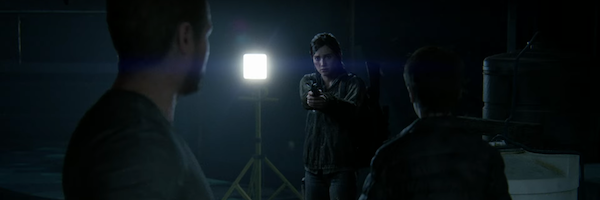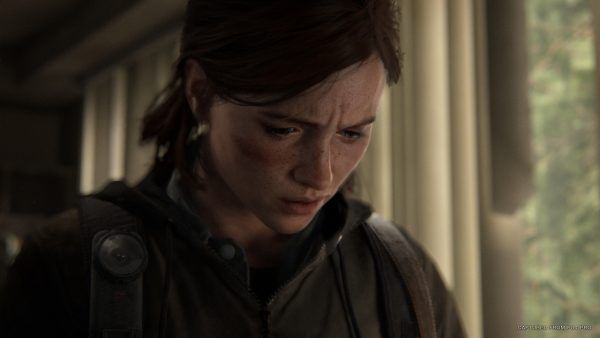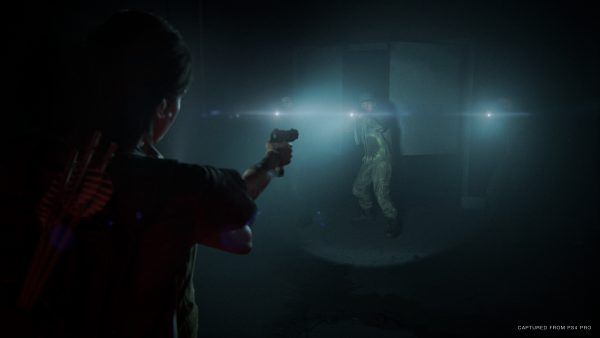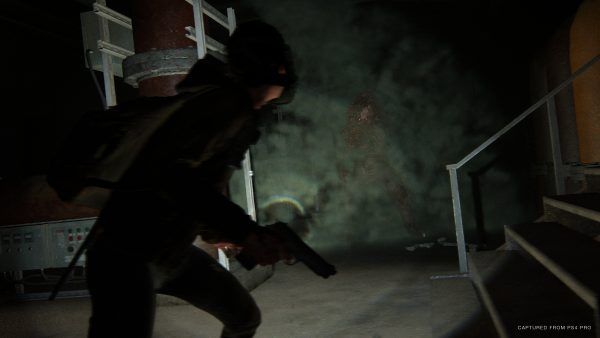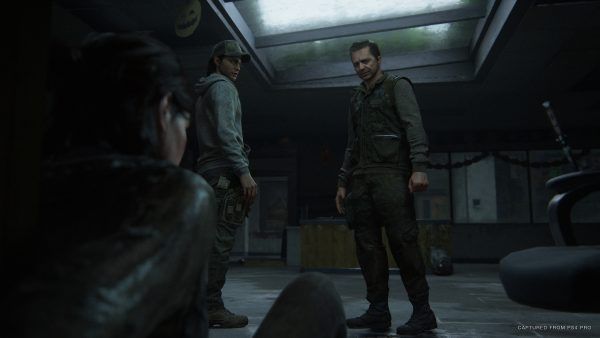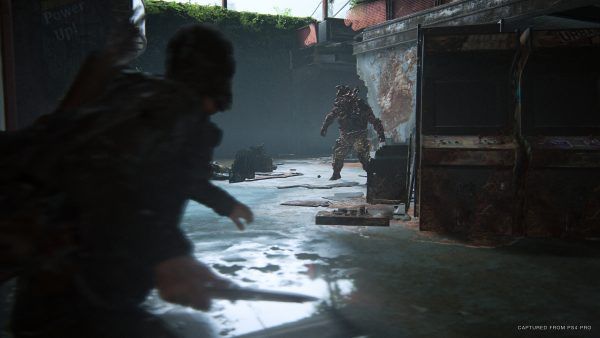[Editor's note: The following contains spoilers for The Last of Us: Part II.]
So you're all geared up to play Naughty Dog's The Last of Us: Part II now that it's out in the world ... but maybe you didn't play The Last of Us back in 2013, or its DLC, or maybe it's just been a long time since you did and you need a refresher. We've got you covered.
What follows is our list of six handy tips and tricks to make your experience playing The Last of Us: Part II as smooth as possible. Some are simple menu suggestions, others are gameplay-specific, and still more are on the existential side of things. We're keeping the spoilers to a minimum -- mostly game mechanics and some enemy tactics -- so if you're sensitive to such things, it's probably best to avoid this guide and check the game out for yourself. But if you need a helping hand to get you started, read on below:
Set Your Expectations
Difficulty settings are the easiest way to tweak your experience. Just want to enjoy the story? Very Light is for you. Want to be a post-apocalyptic badass? Survivor is the choice, at least until more difficult runs are (presumably) released in the future. (Your allies, when available, are nigh unkillable and will also pretty much take care of themselves on any difficulty, so use that fact to your advantage.)
I completed the game on Very Light, ie Story Mode, ie Baby Game Reviewer Mode. It's obviously going to be a completely different experience at the extreme ends of the Difficulty scale, so your mileage will vary. The point is to tailor the game so you can play it the way you want it, and I'm happy to say that Naughty Dog has given players of all types plenty of options:
- Very Light - Explore and experience the story with a light combat challenge. Camera and aim assistance settings are enabled by default.
- Light - Less challenging than Moderate. Resources are more common and enemies are less dangerous.
- Moderate - Provides a balanced experience. Resources are limited.
- Hard - For those looking for a greater challenge. Resources are very limited and enemies are more dangerous.
- Survivor - An intense, demanding challenge. Resources are extremely scarce and enemies are deadly.
- Custom - Customize the difficulty settings to create your own challenge. (Cool feature! Difficulty sliders for Player, Enemies, Allies, Stealth, and Resources to specifically tweak your preferred playstyle.)
- Grounded? - Stay Tuned!
Granted, some of these options may only pop up once you've played through the game once, but there's the added value of being able to change your difficulty settings on the fly. Getting frustrated? Ease up on the difficulty. Not feeling enough of a challenge? Go ahead and push towards Survivor. The best part here isn't just the flexibility but the ability to revisit chapters or specific encounters after the fact and try them again at different difficulty levels. That's great quality of life stuff.
Pace Yourself
So while I played The Last of Us: Part II on the easiest possible mode, it still clocked in as a 30-hour-plus game. That's a lot. Especially when the narrative is as heavy on player "choice", ie guilt, philosophy, character moments, and tons and tons of mythology and lore as this sequel is. There is a lot to take in and experience here, so it's worth taking your time to make sure you get the most out of it, especially if you want to 100% clear every area (and since this game is rather linear, you don't get a chance to backtrack much at all.)
But there's another reason to take your time: Mental health. I'm not joking when I say that The Last of Us: Part II is going to affect some people more powerfully than others, but it should also be an empathy test for just about everyone who picks it up. It's okay to take breaks from a game like this. In fact, I don't recommend marathoning this game and its many brutal, intense, scarring sequences one after another after another. (Speaking from personal experience, that's a Bad Time, so avoid it if you can.) Not only will taking breaks keep you sane, it'll give you time to grapple with the weighty emotional material this thing drops on you. Stay hydrated, take breaks, cry, confide in friends, rinse and repeat.
Play Your Way
Are you the type of player who likes to silently take out enemies with a bow and arrows? Or are you a bang-bang, shoot-em-up gunslinger who likes to run and gun? Are you the slow and stealthy type who would prefer to track enemy paths and wait for an opportunity to sneak around them, or are you more of the "Kill 'em all and let God sort 'em out" sort? Either way, you should have a lot of fun and flexibility in The Last of Us: Part II.
The run-and-gun style and piled-up body count will undoubtedly be easier on the Very Light end of the difficulty spectrum, while the silent and stealthy mechanics may be necessary on Survivor mode, but you can find your sweet spot somewhere in between. Not all engagements are necessary, but some are. You can sneak your way around a majority of the enemies, even staying on the move to keep ahead of tracking dogs or distracting those coming after you with a well-placed brick or bottle, but eventually you'll have to take on a horde of Infected or a single boss-level character. So my advice would be to find the playing style your comfortable with but remain flexible enough to think on your feet and react on the fly; sometimes stealth will win out, sometimes you'll have to run and gun for your very life.
Break Everything
One thing that drives me crazy in semi-open-world survival games is the mostly indestructible environment. The Last of Us: Part II hasn't just made nearly every pane of glass in the game breakable, they've factored that aspect into the story itself. It sounds like a small detail and an admittedly weird tip to include here, but it's such an unusual mechanic that I wanted to call special attention to it.
Not only are there full-on breakable windows pretty much everywhere in the game, including store displays, car windows, apartments, etc., there are even breakable glass for small display cases, vending machines, and the like. Why is that important? A bunch of reasons! First of all, breaking windows can get you around locked doors, blocked entrances, and obstructed paths, while also opening up ways to hidden loot stashes or other in-game goodies. (A particularly funny moment for yours truly occurred after I leapt across a divide, smashed a sliding-glass door window to pieces, only to try the door itself a second later and find that it has been unlocked the whole time...) A less obvious reason is that breaking a window may allow you to either draw enemies to a particular area as a distraction or clear enemies out of an area they happened to be congregating in. (One particular use of this came up in my playthrough where a Clicker, a half-dozen Runners, and a Bloater were all trapped in a store ... and my dumb ass decided to let them out.)
Additionally, breaking open display cases will grant you access to precious resources scattered throughout the game, which is vital on higher difficulties. Just keep in mind that you'll also be drawing attention to yourself, so make sure it's worth the trouble. Most of the time, it is.
I reiterate: Break. Everything.
Choose Wisely
While Naughty Dog's narrative might give you the illusion of choice while actually forcing your hand most of the time, you still have a lot of flexibility as a player. Some of the actual choices you get to make involve when and how you both upgrade your weapons or boost your skill set. To improve weapons, you collect parts; to boost skills, you gather "supplements" (pills or capsules). The problem is that there's a limited amount of both in the game, especially in one playthrough, more so at higher difficulty levels. So it's wise to focus on just the upgrades you deem absolutely essential and to focus on those.
But how to choose? Maxed out ammo clips may be just as handy as damage-ups, while boosts to health and Listen Mode abilities may be literal lifesavers throughout the game. Even on the easiest difficulty with more than 30 hours in the game, I only upgraded roughly half of all available weapons and skills, and still didn't find all the training manuals (which unlock additional skill sets). There's a lot to find, but you'll have to do multiple playthroughs to get it all done. In other words, don't feel like you have to max out everything immediately; take your time, be choosy, and be smart about it. [Update: Having watched a Survivor-level playthrough, it seems like there may actually be more Supplements available than at the easier levels, perhaps as a balance mechanic. Could it be possible to max out on skill upgrades in just one super-tough playthrough? Maybe so!]
Know Your Enemy
Enemies abound in The Last of Us: Part II: Humans -- both "militarized but loud" and "stealthy but primitive" types, Infected of all sorts (including a new Stage 6), and even dogs that track you down. (This game pulls no punches with forcing you to kill at least one dog, if not more, and then reminds you to feel bad for it, just as a heads up.) With humans, you can either play the sneaky sort and take them out one at a time with a stealth kill (ideally from behind cover when isolated) or with a silenced pistol or bow and arrows, or just straight-up engage them in a gun battle; it depends on your style. Stealthy builds will live longer than others, however.
The Infected, on the other hand, require a bit more strategy when it comes to dealing with them. Folks who played The Last of Us should recognize four stages of the Infected: Runners, Clickers, Stalkers, and Bloaters. Newcoming enemies include the Shamblers, big tanky beasts that chuck acid bombs at you and offer up combos for their Runner pals to wreck your face. That's Stage 5; for intel on the new Stage 6 boss, check out my spoiler review and search Stage 6, since that's too spoilery for this set of tips. With Runners, stay quiet and get behind them to do a stealth kill. Same goes with Clickers, just with a bit more care and stealth; no need to craft shivs here since Ellie's switchblade blissfully takes out every enemy with stealthy efficiency. Stalkers, my most-hated enemy, are quick and hit hard, and they like to run away from you and hide; their greatest asset is how much they creep you out as a player, but a few shots from a heavy weapon or some well-placed melee quicktime shots will take them down. And if you know how to take out Bloaters, then Shamblers aren't much different; both of them are tank-bois that take a lot of shots and deal out one-shot kills (by ripping your face apart); the Shamblers compound things with a lunging acid-splash attack and explode into a noxious cloud upon death. Keep your distance, clear out the Runners in the room first if you can, and hit them with the heaviest gear you've got ... or just avoid them entirely if you're able to. But if not ... here's one last bonus pro tip:
Molotovs are your friend!
Infected are particularly weak to fire. A molotov also does quite well for crowd control, be the enemies Infected or Human, though the effects are lessened a bit at higher levels. A molotov can also double as a window-breaker and fire-bomb in one, so it's very smart to always have a full complement on hand. Expect to see these suckers a lot in the eventual speedruns!

